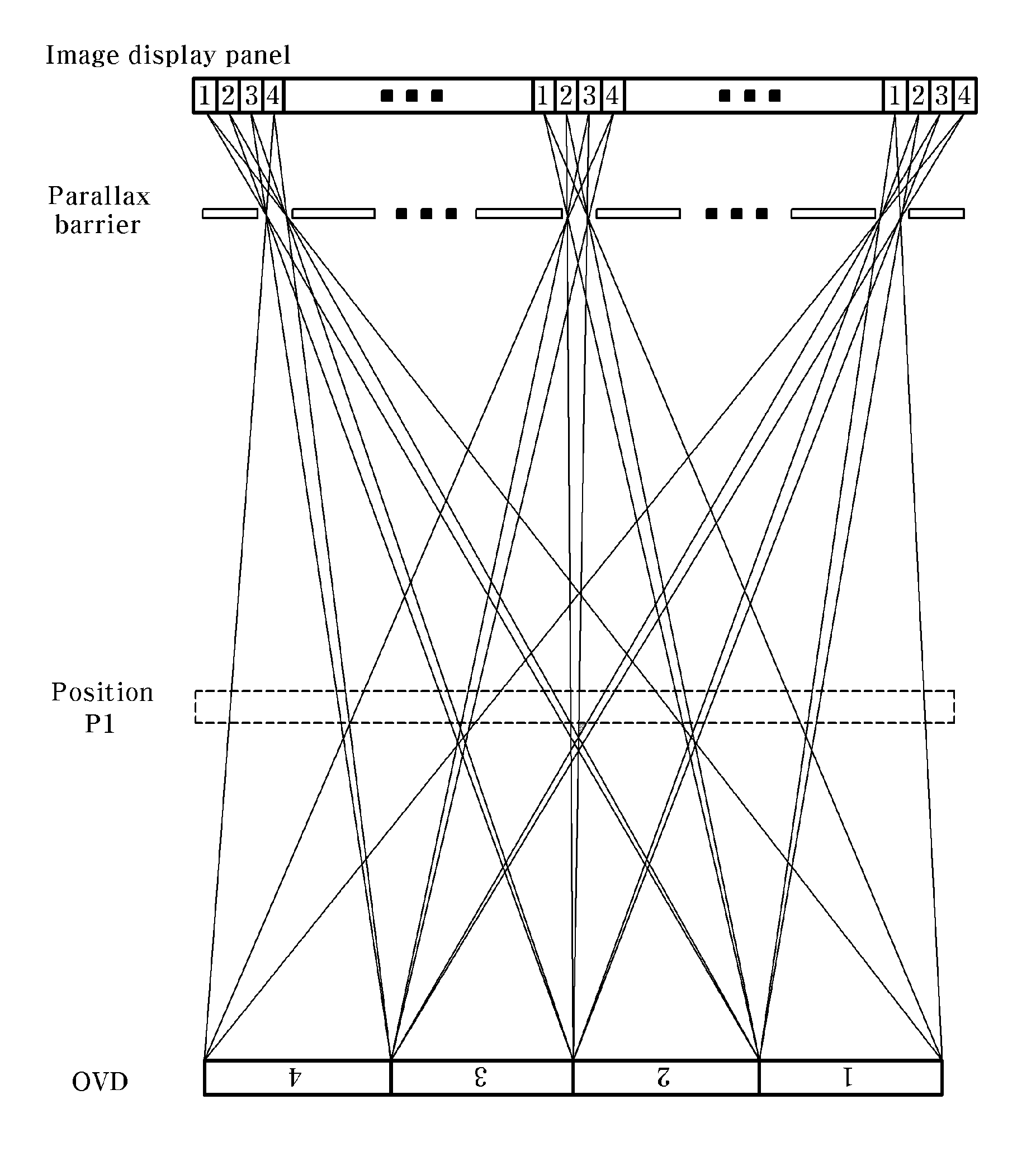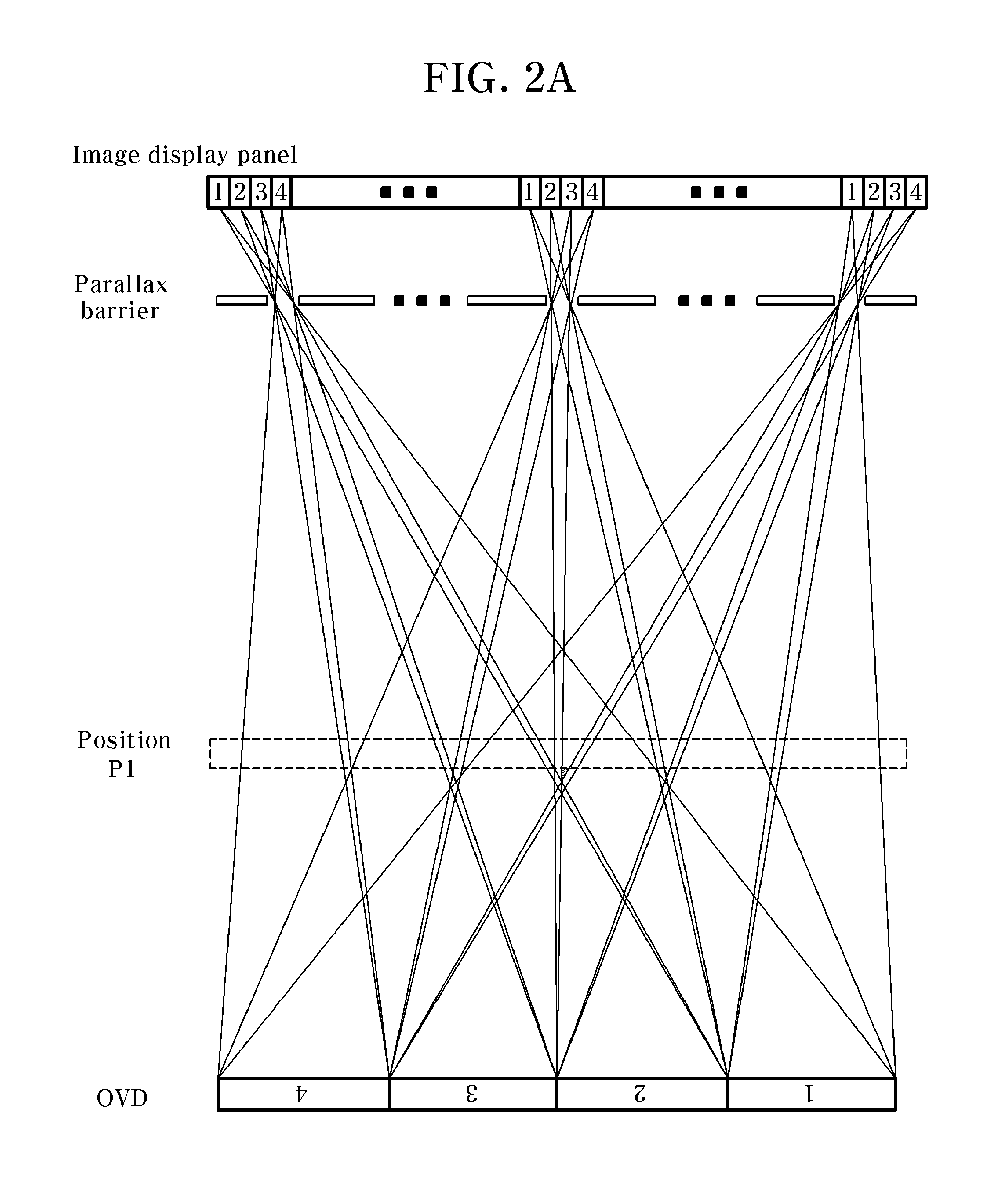Autostereoscopic three-dimensional image display device using extension of viewing zone width
a three-dimensional image and display device technology, applied in the field of autostereoscopic three-dimensional (3d) image display devices, can solve the problems of severe fatigue, the brightness of each of the binocular viewing-point images is not uniform horizontally, and the commercialization of autostereoscopic 3d image display devices, so as to minimize the brightness change of a 3d image, reduce the crosstalk of binocular viewing-point images, and minimize the effect of the reduction in the resolution of a 3
- Summary
- Abstract
- Description
- Claims
- Application Information
AI Technical Summary
Benefits of technology
Problems solved by technology
Method used
Image
Examples
Embodiment Construction
[0042]Exemplary embodiments of the present invention will be described in detail below with reference to the accompanying drawings. While the present invention is shown and described in connection with exemplary embodiments thereof, it will be apparent to those skilled in the art that various modifications can be made without departing from the spirit and scope of the invention.
[0043]FIG. 3A is a conceptual diagram for describing a two-viewing point 3D image display device using three line source sets, in which a distance between adjacent viewing points is designed to be 1.5 times a general binocular distance, according to an embodiment of the present invention.
[0044]Referring to FIG. 3A, the 3D image display device includes: an image display panel that provides at least two viewing points to display a 3D image; and a backlight that is disposed to be separated by a certain distance from a rear surface of the image display panel. The backlight includes a plurality of line sources (he...
PUM
 Login to View More
Login to View More Abstract
Description
Claims
Application Information
 Login to View More
Login to View More - R&D
- Intellectual Property
- Life Sciences
- Materials
- Tech Scout
- Unparalleled Data Quality
- Higher Quality Content
- 60% Fewer Hallucinations
Browse by: Latest US Patents, China's latest patents, Technical Efficacy Thesaurus, Application Domain, Technology Topic, Popular Technical Reports.
© 2025 PatSnap. All rights reserved.Legal|Privacy policy|Modern Slavery Act Transparency Statement|Sitemap|About US| Contact US: help@patsnap.com



